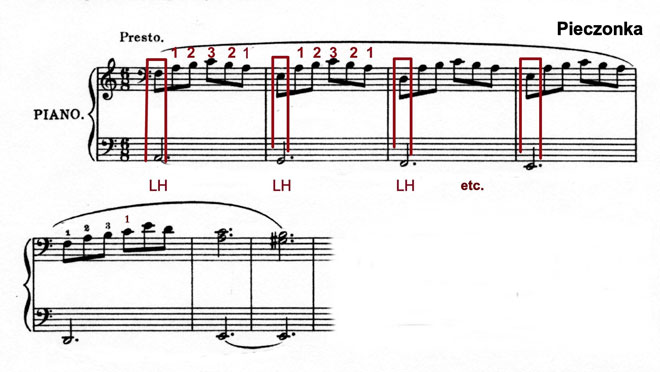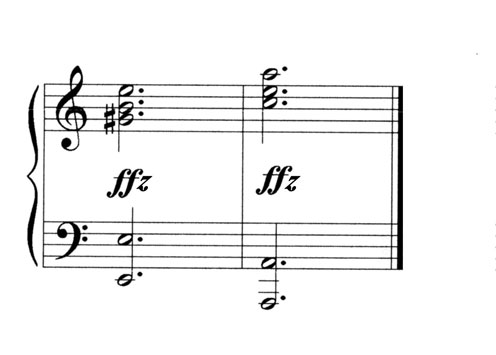
Technical Tips on Performing the Tarantella in A Minor
Many
young students have developed their technical facility to the point where they
can tackle a flashy piece like the Tarantella
in A minor. If their hands are
small, however, technical and tension problems can quickly arise in this
piece. Here
are some practical suggestions to help adapt the Tarantella to fit small hands comfortably. Ultimately
there is no need to sacrifice speed or ease. Leaning
to the left will help some students straighten out the right arm and free up
the right hand for this passage.
Releasing the RH thumb will also help.
The Coda: Try an Ossia in measures 179-184
As
with the Introduction, leaning to the left can help some students free up the
right hand. Also beneficial is releasing
and relaxing the thumb so it is not stuck in a fixed, stretched position. Here,
I suggest an Ossia for small
hands—adapting the passage by changing the notes of the right hand to an arpeggiated, first inversion A minor triad. With the dramatically surging left hand and
carefully negotiated pedaling, the over-all effect is not altered and, at the
rapid tempo, the RH Ossia will hardly be detected. Repeat the Ossia in measures 187 to 191 for consistency.
The
Ossia
for small hands:
The B Section—Two
suggestions to avoid tension Measures
67-121 also contain challenges in the right hand for some small hands. My first suggestion is: for small hands, the
top notes (dotted quarters) of the eighth note figures should not be held—the
damper pedal should be used for creating the required legato. These top notes should be played by the fifth
finger when the intervallic span of the figure is an octave, seventh or
sixth. The thumb should be played easily
and gently. The hand should not stay
fixed in an extended, stretched position.
This stretching causes excessive tension. Swift and skillful pedaling will ensure the
smoothness that Pieczonka intended.
Another
solution involves a redistribution of the notes between the hands. Through a lot of this section, the left hand
is in a position to easily take the last eighth note of the right hand eighth
note figures.
The Final Chords—Dynamic
and comfortable Many
small hands cannot comfortably negotiate the final RH chords of the Tarantella. After a very fast and brilliant Coda, this is
no time to struggle with a tight hand and wrong notes. In the right hand, I
suggest eliminating the bottom notes of these final two chords to ensure that
they are easily and cleanly played at full volume. The result will be first inversion triads for
the RH, comfortably played with 5 – 2 – 1.
© Stephen
Erickson August 9, 2012 |




